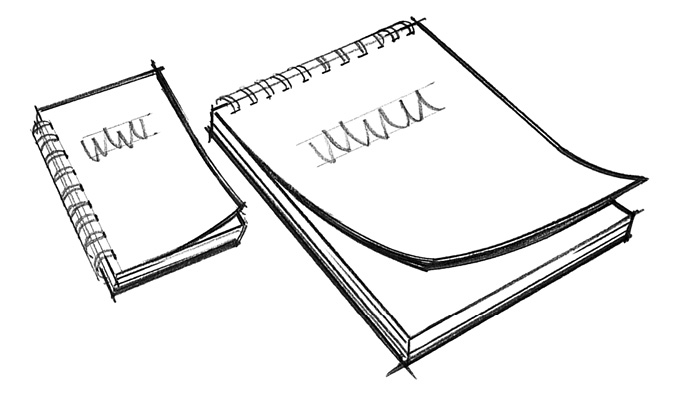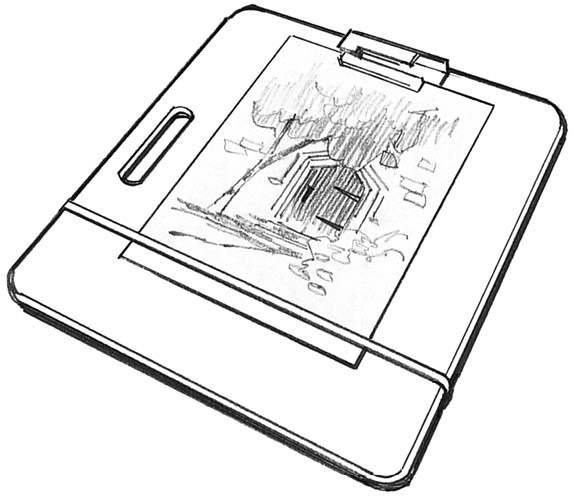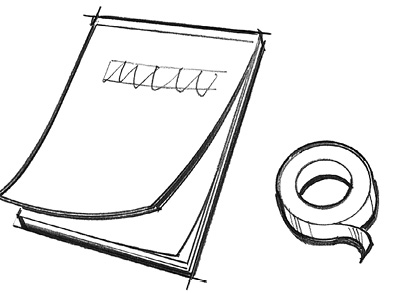
Sketching and Drawing Paper
Use both a small sketch pad and a larger drawing pad. Tear out the individual drawing pad sheets and use them on a drawing board.
Papers for sketching and drawing vary in size, weight, surface texture (usually referred to as tooth) and content. They may also be categorized as either sketch or drawing paper. When choosing drawing paper, always choose an acid-free paper, or the paper may yellow over time. Sketch paper, as the name implies, is for sketching and usually has a paper weight of 50 to 70 lbs. (105gsm to 150gsm). Drawing paper, which is for more finished art, usually comes in 90-lb. (190gsm) weight. A small 6″ × 4″ (15cm × 10cm) pocket sketch pad is great for quick studies and ideas, while larger sketch pads are obviously needed for bigger sketches. Any drawing you begin may be completed as a keeper, so you may prefer to begin all your drawings using an 11″ × 14″ (28cm × 36cm) medium-tooth, acid-free, 90-lb. (190gsm) drawing paper.
The lights and darks in a drawing are achieved by varying the amount of pressure applied to the pencil. Because of this, it is necessary to have a hard surface beneath the paper, ideally a drawing board. It offers a smooth, solid surface without surprise ruts or nicks, and it won't bend or give with pressure the way the cardboard back of a drawing pad can.

Use both a small sketch pad and a larger drawing pad. Tear out the individual drawing pad sheets and use them on a drawing board.

Drawing boards can be bought with a clip attached to one end and a rubber band on the other to hold a sheet of paper in place.
Use tracing paper to make a more refined sketch. Put the previous sketch under the top sheet of tracing paper. Use masking tape to secure the sheets of paper to each other, then carefully trace the desired elements of the image onto the tracing paper.
